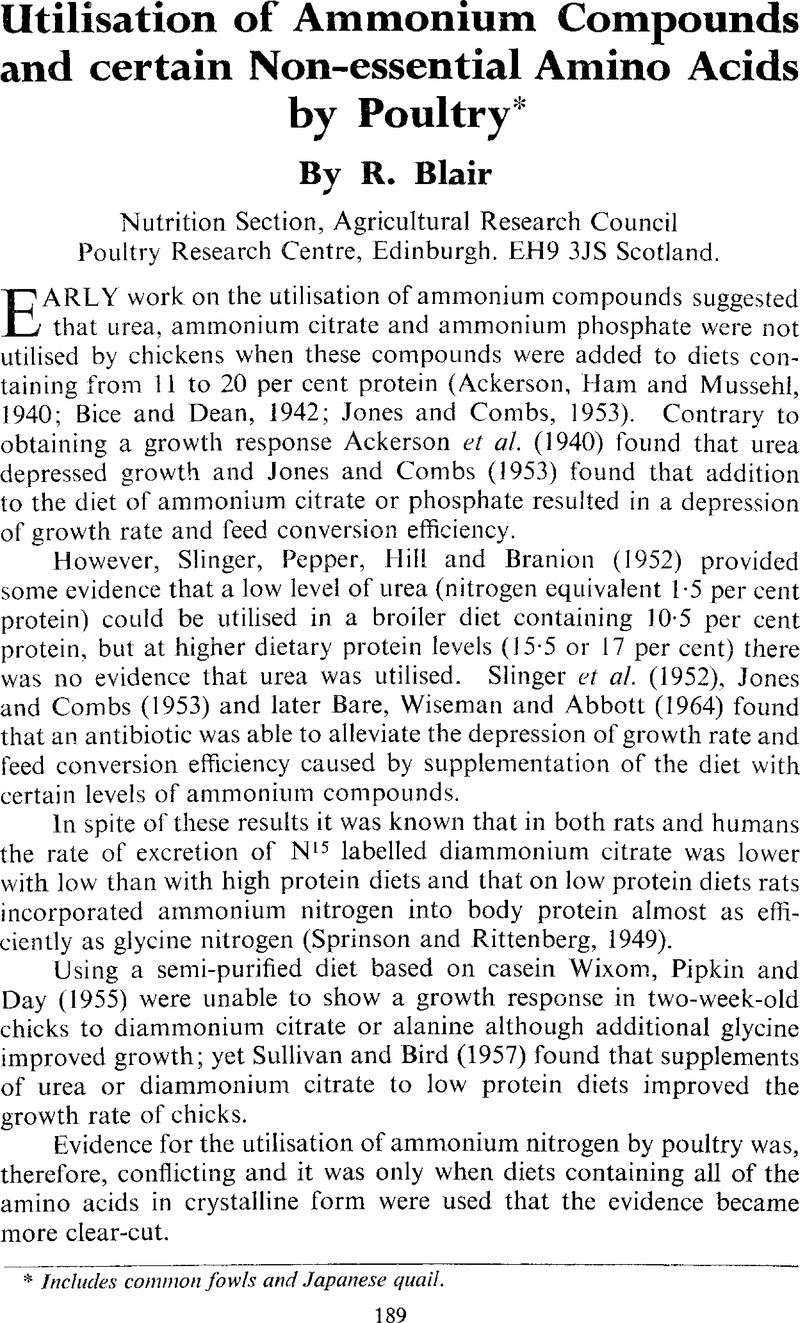Crossref Citations
This article has been cited by the following publications. This list is generated based on data provided by Crossref.
McNab, J. M.
Lee, D. J. W.
and
Shannon, D. W. F.
1972.
The growth of broiler chickens fed low‐protein diets containing triammonium citrate, diammonium hydrogen citrate and autoclaved dried poultry manure.
British Poultry Science,
Vol. 13,
Issue. 4,
p.
357.
McNab, J.M.
and
Lee, D.J.W.
1972.
The incorporation of ammonium nitrogen into amino-acids by chick (Gallus domesticus) liver homogenates.
International Journal of Biochemistry,
Vol. 3,
Issue. 14,
p.
187.
Blair, R.
and
Lee, D. J. W.
1973.
The effects on egg production and egg composition of adding supplements of amino acids and/or urea or dried auto‐claved poultry manure to a low‐protein layer diet.
British Poultry Science,
Vol. 14,
Issue. 1,
p.
9.
Andrews, R.J.
1974.
Nutrition Conference for Feed Manufacturers.
p.
49.
Blair, R.
and
Young, R.J.
1974.
Egg Production Responses of Coturnix Quail to Dietary Additions of Nitrogen in the Form of Amino Acids, Diammonium Citrate and Intact Protein.
Poultry Science,
Vol. 53,
Issue. 1,
p.
391.
Jamroz, Dorota
and
Gruhn, K.
1974.
Einfluß der Harnstoffsupplementierung zur proteinarmen Ration auf die N-Bilanz, Verdaulichkeit der Nährstoffe und den Harnstoffgehalt in Exkrementen und im Blut von Junggänsen.
Archiv für Tierernaehrung,
Vol. 24,
Issue. 5,
p.
421.
Vuori, A. T.
and
Näsi, J. M.
1977.
Fermentation of poultry manure for poultry diets.
British Poultry Science,
Vol. 18,
Issue. 3,
p.
257.
Bergaoui, Ridha
and
Vervaeke, Ilbert
1980.
L'activité uréasique de la flore du tractus digestif de la pondeuse, effet de la Bacitracine et de la Flavomycine.
Zentralblatt für Bakteriologie. 1. Abt. Originale A, Medizinische Mikrobiologie, Infektionskrankheiten und Parasitologie,
Vol. 247,
Issue. 1,
p.
74.
Flachowsky, G.
Ayalew, Tesfaye
Negesse, Tegene
and
Banjaw, Kano
1985.
Feeding poultry litter to grazing Boran Zebu bulls and Ogaden sheep in Ethiopia.
Archiv für Tierernaehrung,
Vol. 35,
Issue. 7,
p.
507.
Vispo, Conrad
and
Karasov, William H.
1997.
Gastrointestinal Microbiology.
p.
116.



